The time has come, we think, for us to reveal what is happening in the printing office at the moment . . . or, rather, what I have been printing away at for many weeks now, while Frances tells the world about the already wonderfully appreciated The Third Thing and Ralph Kiggell, now returned home to Bangkok, makes plans for the book to be promoted and exhibited in a number of his far eastern galleries.
Above you will see the titlepage of our new offering which gives most of what you need to know about the text. There have been editions of this remarkable and moving text but not many . . . and I do not know of one where the words have been balanced by equally powerful images.
That clearly is the particular strength of this publication (planned, for obvious reasons, for publication in 1914) [ . . . or, even, 2014. Thanks for pointing that out, Natalie]. John Abell’s wood and linocut techniques have become simply more and more hard-hitting since we first met the young artist a couple of years ago. He has since won prizes and the acclamation of many who have seen exhibitions of his work – often woodcut images of incredible complication and four or five feet square – printed laboriously by the artist himself with the back of a spoon. Five hours labour per print is the going rate, John says!
It did not take the OSP long, as I think you may imagine, to bind this artist to us and agree a text which would be appropriate to his skills and the times.
I have been working for some weeks on printing the text (in Bodoni type and a dark green ink) but I have just reached the excitement of beginning to print the images. It is this that I thought I would photograph for you today.
First of all, here is a lino block, fresh from John. It bears his unique brand of ‘drawing’ . . . very bold and in a handful of crude coloured markers. As the lino is pale, you can hardly see the cutting but it has by this stage been completed, in all its detail. You will note that it has not been ‘proofed’ in any way. John never does. Somehow he is able to know exactly what the cuts he makes will look like.
Look carefully at this ‘drawing’, for it is about to disappear, for ever. Below, you will see that the rollers of my press have inked the lino before the press makes an impression, in exactly the correct place one hopes, on the page which already has text printed on it .
. . . and this is the result of that inking. (The two scruffy pieces of paper below the block, by the way, are there to warn me if the pressure on it from the rollers is forcing the block down the bed of the press.) Here is the printed result.
Here you can see the image in a bit more detail and . . .
. . . and here the image is seen in relation to the rest of the type on the spread.
There is still a long way to go but I hope I have whetted a few appetites to see the completed book, sometime early next year I hope. I, for one, am absolutely thrilled with how the book is developing . . . and so was John when we showed him the first printed image!

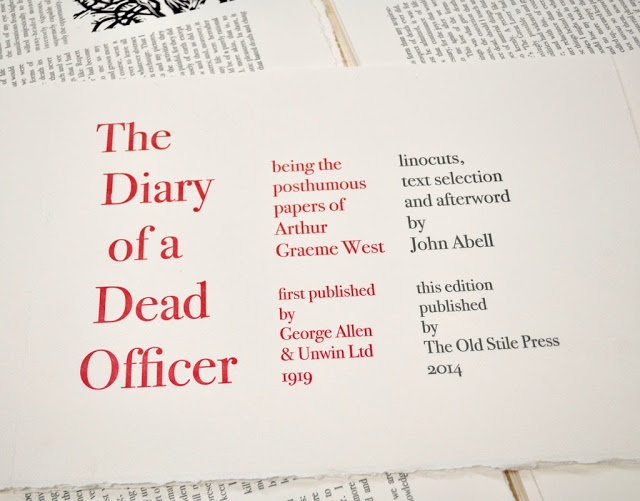
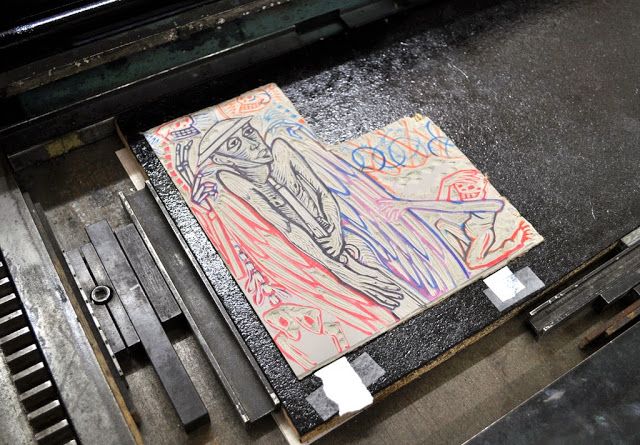
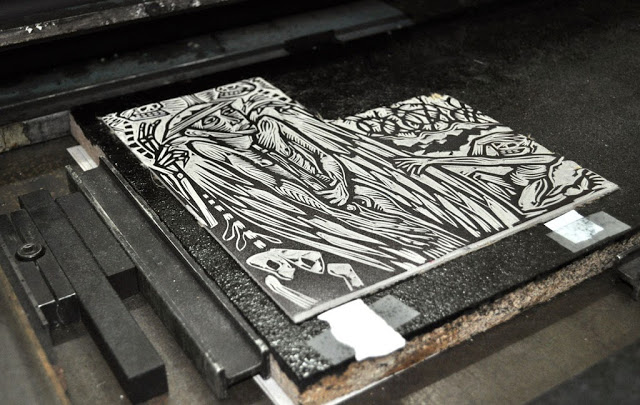
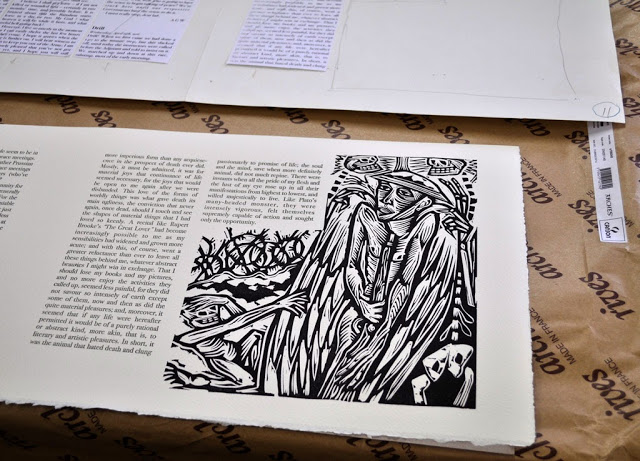
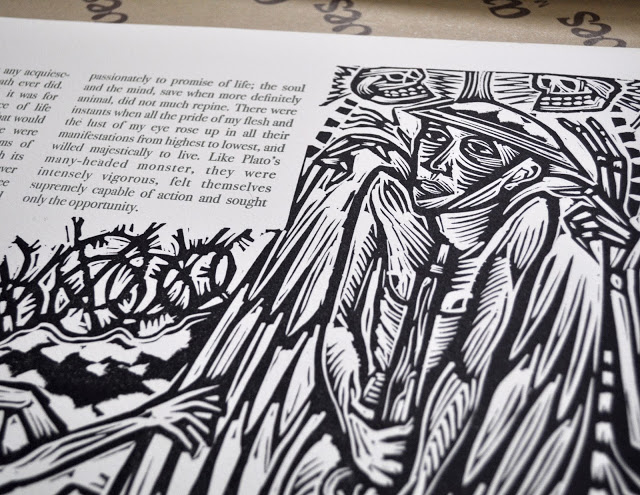
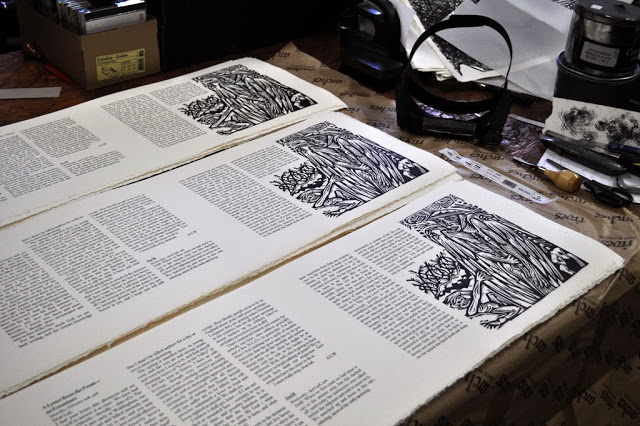
so looking forward to tracking the book building via this blog 🙂
It looks marvellous so far, Nicolas and must be a joy to print. Did you notice that you've written 'for publication in 1914'? Good to see you've added time-travelling to your many skills!
Am happy to be next in the queue for your printing magic.
Your autimn photos are stunning too.